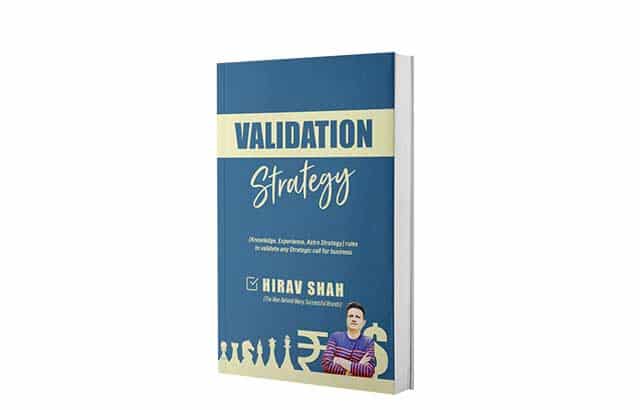Financial Risk Management is important to ensure there isn’t another Global Financial Crisis (GFC) in the world. It is generally seen as a discipline that focuses on modelling uncertainty and how to best implement methods in which to hedge any amount of downside as deemed necessary. This helps a company or investor stay solvent though market downturns, and to stabilize cash flows.
In the absence of appropriate risk management, a firm or investor may expect to perform exceptionally well, when times are good by taking a greater exposure to assets of greater risk, and therefore benefiting from greater returns, but when times are going wrong, they go horribly wrong. And when a firm gets it wrong, a consequence could be insolvency or bankruptcy, and not to mention the loss of stakeholders capital, Says Hirav Shah, The Country’s Most Sought-After Business Strategist, Business Astrologer.
Table of Contents
10 Important Tips for Managing Financial Risk.
1.Financial Risk Management is your GPS
Financial Risk Management is your GPS ! Financial risk management is as important as the selection of purchases or investments. Without an efficient risk management strategy you can lose a lot and get lost .
2. Know Your Numbers Inside Out
A key element of running any business is fully knowing and understanding the numbers and your performance. This comes from your financial statements (profit and loss, balance sheet and cash flow) along with key performance indicators and metrics. Knowing how to read and understand the statements is key to being proactive and making better business decisions, leading to increased profits. New business owners often put most of their focus on customers and products. That’s important, but it will be hard to achieve and sustain success without thoroughly knowing your numbers, inside and out. It’s especially important to be able to anticipate and manage risk, as well.
3. To What Extent, Can You Tolerate Risks
Understand how many risks you can tolerate.
Startups are a gamble, so think like a gambler to see how much risk you can tolerate. How much are you willing to lose on one bet or decision? If you’re a methodical bettor then you’re comfortable with small, calculated bets that generate smaller returns. If you like riskier strategies, then bet big or go “all-in,” knowing that one bet or decision could really impact your future for better or worse.
4. Understand return on investment
Focus On ROI. ROI can tell you if your business is running efficiently. Additionally, you are able to use ROI to track the efficiency of your team. Calculate your margin each month and compare the margin to your investment of dollars or time. Track your ROI each month and before long you will be able to see the health of your business.
5. Don’t Forget About Margin Control And Liability Budgeting
Founders must acknowledge that their business could be susceptible to financial risk. A lot of times, the founder focuses on standard workflows and top-line sales procurement—which in the early stages, though important, results in overlooking bottom line net capture. Understand the statement of cash flow and liquidity ratio while also focusing on margin control and budgeting for each liability.
6. Take A Course And Learn From The Experts or Hire A Consultant
The best way to get informed about financial risk management is to take a course. While it won’t make you a whiz at finances, what it will do is put you in contact with professionals with experience, give you a place to learn and ask questions, and a community to reach out to. If a class is too much, consider getting a book.
Alternatively, you may also hire a consultant. When it comes to financial risk management, it would be money well spent, to hire an independent professional who can show you the ropes and guide you through.
7. Take Out Insurance Policies
Set up insurance policies for your business and employees. Although it isn’t fun to consider worst-case scenarios, it’s mandatory when setting up a strong risk management system. Health and business insurance policies need to be in place to ensure you are financially protected in the event of an incident. As an entrepreneur, you need to look ahead and be prepared for anything.
8. Develop And Update Contingency Plans
It’s a challenge to master risk management, as risk will never be fully eliminated. However, owners can certainly work to mitigate risks by identifying their present and future risks by developing contingency plans and acquiring insurance coverage that will lower risks. Owners will then need to monitor and customize plans as needed.
9.Regularly review your financials
Review and interpret accurate, reliable financial statements and key performance indicator figures as often as possible. This helps guide decision-making for immediate corrective actions should financial risks exist, as well as strategic sales, marketing and financial planning to minimize potential financial risks.
10.Invest wisely
One of the strongest and most palpable financial risks that a business owner could encounter are risks that are associated with investments. Make sure that you have enough information before you make the decision to invest in anything. Invest wisely, Avers Shah.
Final Thoughts
Financial risks that are thought to be unknown, are not unknown. With some foresight and critical thought, some risks that at first glance may seem unforeseen, can in fact be foreseen. Armed with the right set of tools, procedures, knowledge, insight and strategy, light can be shed on variables that lead to risk, allowing entrepreneurs to manage them, Concludes Hirav Shah.


































